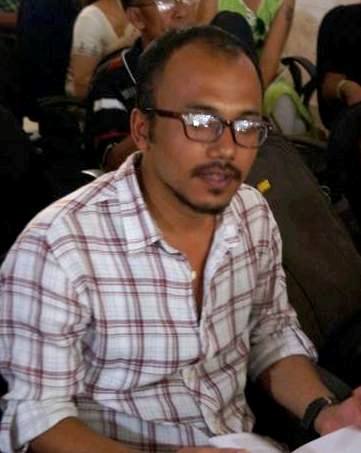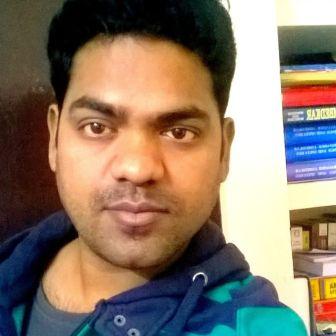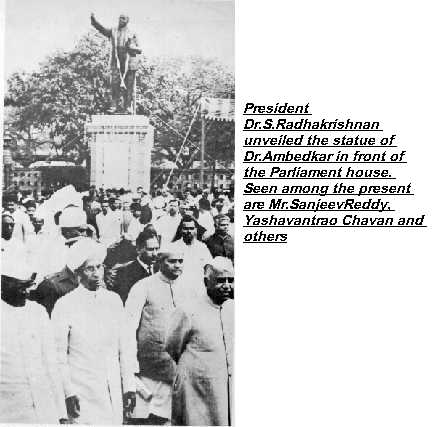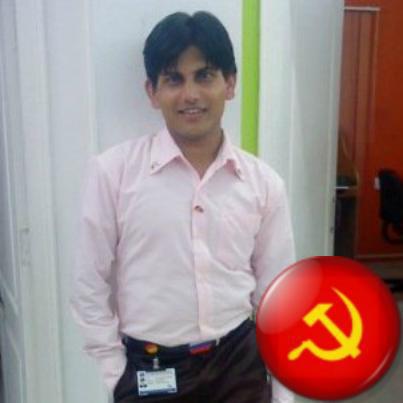Thongam Bipin
 The Inner Line Permit (ILP) is seen and perceived as a shield from every form of exploitation in most parts of Northeast India. And particularly in the ongoing valley-Meetei led demand for its implementation in Manipur. ‘Outsiders’ are seen as responsible for all forms of exploitation – cultural, social and economic et al. The attempt of this article, therefore, is to look into the rhetoric of the demand and analyze from a critical perspective that does not necessarily stand against the very system sought for implementation, but brings out the internal contradiction within it. This article hopes to raise discussions, essentially, around the ‘state of fear and hope’ generated and circulated with regard to ILP.
The Inner Line Permit (ILP) is seen and perceived as a shield from every form of exploitation in most parts of Northeast India. And particularly in the ongoing valley-Meetei led demand for its implementation in Manipur. ‘Outsiders’ are seen as responsible for all forms of exploitation – cultural, social and economic et al. The attempt of this article, therefore, is to look into the rhetoric of the demand and analyze from a critical perspective that does not necessarily stand against the very system sought for implementation, but brings out the internal contradiction within it. This article hopes to raise discussions, essentially, around the ‘state of fear and hope’ generated and circulated with regard to ILP.
ILP was a double-edged colonial system that was fundamentally enacted to safeguard colonial economic ventures. It permitted colonial masters a free hand in exploiting ‘indigenous’ resources under the garb of protecting the ‘vulnerable ‘ indigenous population from ‘outsiders’. Vulnerable populations, hence, could be a colonial adjective. In contemporary India, a ‘postcolonial’ state, colonially qualified vulnerable populations themselves are claiming vulnerability. This claim of being vulnerable and the demand for protective laws can be constituted within the larger framework of modernity: of imposing an assimilative ‘predatory identity’. In order to withstand this predatory identity, the vulnerable demand protection under laws which the modern state and the dominant groups [read mainland Indians] see as problematic in nation-construction, perceived as parochial and anti-modern.
However, the article argues that these anomalies of modernity are products of the overarching ideology of modernity. They become tools for reassertion of modernity i.e., nation. In the case of Manipur, like in other parts of Northeast, a fear psychosis is instilled in the mind of the general public of a possible extinction of the indigenous population of the state without ILP; the threat is circulated among the masses through popular media: songs, films, newspapers, public meetings and dharnas, and social media. Creation/formation of a monolithic, collective nation/community through movements like ILP demand necessitated a creation of fear of extinction among the masses in the onslaught of global capitalist economy and continuous labour migration. Such perceived threat, thus, allows formation of camaraderie in an ’empty homogenous time’. Systemic minoritisation of indigenous Tripuri population in Tripura often became a point of reference.
According to 2001 census report, the population of the state of Manipur was 23.94 lakh. Out of which, Meitei, the valley dwellers, were 7.51 lakh; all the hill dwellers, tribal population was 6.71 lakh, Muslims were 1.67 lakh. The migrant workers (outsiders?) constitute the remaining 7.04 lakh, as reported by the Hindu. However, the report does not clarify whether or not this 7.04 lakh population of migrant population includes other communities like Nepalis, the Marwari business community, and other non-indigenous people. The purpose of the report is to suggest that there is an exponential increase of non-indigenous population. The five point charter of demands put forth by the Joint Committee for Inner Line Permit System (JCILPS), to the Ibobi government, in its second demand, highlights the unnatural growth of population – 450% growth in population from 1950 to 2001. On November 18, 1950, the then Chief Commissioner of Manipur, Himat Singh, did away with the existing permit system which, according to JCILPS, laid ‘the foundation stone of present day demographic imbalance and minoritization of indigenous peoples'(3).
Such ‘disproportionate’ increase in population strengthens the common belief that there has been and is a state sponsored migration of labour in the state. It is feared that the Nepali community is in the process of becoming the largest ethnic group after Meiteis. Arunachal Pradesh is an apt example of such state policies. Further, the Hindu report suggests that the government has not shown community-wise population break up for 2011 census as it might escalate the demand for the implementation of ILP in Manipur.
‘Outsiders’ is a most used and abused term in most parts of the northeast, and for obvious reasons. In the case of Manipur, the term has a long history, it gives an eerie feeling to the ‘indigenous’ population. Keeping colonialism out of the discussion, a term like ‘outsider’ brings back the memory of coercive religious conversion during the eighteenth century – from the indigenous religious belief system to the new belief, Hinduism. This change in faith had brought historical misinterpretation, misrepresentation and burning of Puyas. Above all these, the present stalemate of the state can be traced back to this religious conversion. Students of the state, in the latter part of the last century initiated a strong anti-outsider movement as well. Therefore, ‘outsider’ collapses all non-mongoloid features in one bracket. Mayang could be a Meitei word that captures the essence of the outsider here. The JCILPS keeps outsider, non-indigenous and non-Manipuri as inter-replaceable categories. JCILPS’ definition of outsiders/non-indigenous/non-Manipuri is ambiguous. This generic category is defined by illuminating who are the indigenous people of Manipur and who are the ‘permanent settlers’:
1. Indigenous peoples of Manipur are those with historical and special inalienable relationships with the land, resources in Manipur with distinct cultures and traditions experiencing historical and continued subjugation, domination and threats to their survival and livelihood.
2. Permanent settlers means the settlers who settled in Manipur on or before 1st January 1951. (page 1)
Just to reverse Appadurai’s argument of the ‘fear of the majority population of the presence of minority population as sign of incompleteness of the nation’, small/minority communities have fears in reverse of the majority – of assimilation into the dominant community/ideology, of extinction. Here, this state of fear is creatively and effectively used to generate hope, hope of a new nation, renewed sense of collectivity and identity. In the light of this fear of both the dominant and the dominated, of majority and minority, can the fear of the minority population be reduced to mere perception? Indulgence of the majority in systemic violence to overcome their fear of incompleteness, the feared is forced to produce another narrative of fear. The argument here is that both fears tend to nation/identity formation. However, the dominant community often hides their identity assertion through modern concepts like secularism, nation-building, global village etc.
However, this ‘fear’ of the minority, from a dominant and national perspective, is anti-modern, which is to say that, it is against the fabric of nation-building because it ‘envisages’ an ‘insulated’ community/identity that sees outsiders/non-indigenous as potential threat to the community. Further, community under ILP hopes that a regulatory mechanism/law will restrict/censor uninterrupted flow of dominant population and ideologies. Hence, indigenous identity can be protected; internal resources can be used for the benefit of the indigenous population. In the ongoing demand for the implementation of ILP in Manipur, fear and hope are instilled into the general public simultaneously in their political rhetoric: fear of extinction/being a minority in their own land; and the hope for a new lease of life for the indigenous community. Thus, this rhetoric makes the outsiders the modern monsters responsible for all the discriminations and exploitations of the general public. It refuses, or considers inconsequential, to even acknowledge the presence of an internal exploiter.
The demand for ILP and the strong involvement of the masses have its roots in movements such as the anti-Hindu religious movement, armed-separatist movement, language movement, which all serve the same purpose of nation formation. Such a long history of various movements that have prioritized ‘nation’ helped in glossing over of the critical engagement with the nation-concept and movements. Hence, a critical review of this ILP demand becomes secondary in the face of an impending nation/community. This is a classic case of conflict between social and political freedom. Dr. B.R. Ambedkar and Gandhi’s discussion on the matter will be a useful point of reference here. For Gandhi and other dominant caste/class nationalists, political emancipation was their immediate obsession unlike Ambedkar who took social emancipation importance over political. Emphasis on social emancipation by Ambedkar and other leaders of oppressed caste/community, allows one to look into internal conflict and contradiction of the society. On the contrary, Gandhi and others, externalizing their social positions, saw the ‘outsiders’, British, as exploiter and not the native Brahmins, upper caste/class community; or, at the least considered an internal matter of India.
Within this framework of imagining a nation, ILP demand/movement in Manipur suppresses any critical view and thus directs all forms of exploitation to outsiders alone. However, social and political inequalities are real facts of Manipur. The gap between the rich and the poor, town and villages, Hills and Valley are increasing day by day. The rich who have political connections continue to exploit the poor, the resources; they determine the future of the society and Manipur at large. There is not much of a choice for the poor between the two oppressors: ‘outsiders’ and the indigenous elite. Fear and hope of the community, as we have seen in other parts of the world, is often generated by a ruling class to topple another ruling class. However, fear under native elite is glossed over and this is made possible by hegemonic modern political imagination like nation.
In the present ILPS movement, the common people are asked to choose the indigenous elite over outside exploiter. The indigenous elite get a free license to indigenous resources for exploitation, making them no different from the colonial system. The internal contradiction of the society is still an internal matter for the leaders spearheading the movement. In this empty rhetoric of the movement, any discussion on equal access by everyone from the indigenous population and community to resources, opportunities, healthcare, education etc., are distant dreams. Without solving these fundamental inequalities, Manipur under ILP will only bring further inequalities.
Unless the internal contradictions are given due importance, and one is not carried away by popular imagination of fear and hope, even if ILPS is implemented in Manipur, there won’t be any positive change in the relationship between Hills and Valley; poor and rich, Imphal and the rest. The state of fear and hope would exist with or without ILPS.
~~~
Thongam Bipin is currently a Ph.D student in University of Hyderabad.










